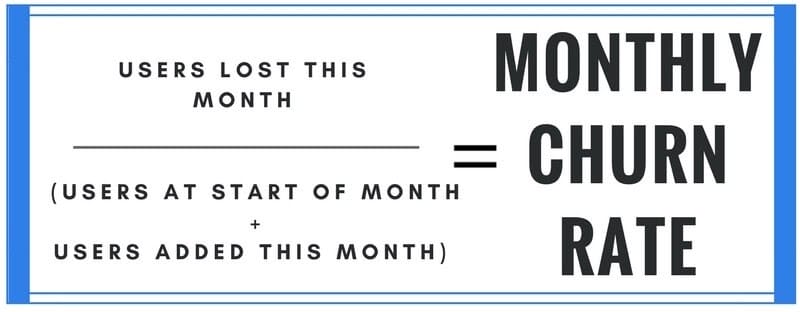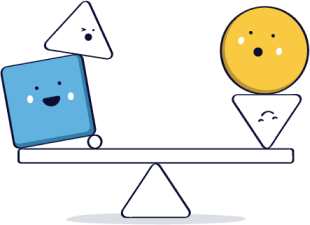Importance of effective communication between teams

“Nutshell is super user-friendly and intuitive

“I would highly recommend Nutshell

“Easy to use and... wait for it ... 100% buy in!

“Nutshell is both simple and powerful
Sales teams and marketing teams often work together, but what about your sales and customer support teams?
The relationship between a company’s sales and support teams should be tightly aligned, with shared goals, open communication, and mutual accountability for customer satisfaction and long-term retention. When these teams collaborate effectively, they create a seamless customer experience that drives renewals, upsells, and sustainable growth.



Take our guided tour to explore Nutshell’s incredible features!

Table of Contents
Sales teams and marketing teams often work together, but what about your sales and customer support teams?
If sustained revenue growth is your goal, you can’t afford to neglect the relationship between these two departments.
The reasoning is simple: If your customers have a post-sale experience that falls below their expectations, they’ll move onto a competitor and your company’s growth will peter out. Increased collaboration between your sales and support teams is the best way to prevent this from happening.
In this article, we explore why it’s so important for these two teams to work together, plus the techniques and metrics that make this cross-divisional collaboration a reality.
Long-term customer relationships are your company’s lifeblood. Hopefully, this statement comes as no surprise. Still, digging into why this is so important is the first step to understanding why sales and support teams should work more closely together.
The secret to sustained revenue growth is in the upsell. According to research, the likelihood that an existing customer will respond to an upsell is 60 to 70%. In comparison, the chances of making a sale to a new prospect are only 5 to 20%. This is especially true for B2B companies, where 90% of customer value comes after the first sale.
Another reason you absolutely must retain customers in the long-term? Replacing them is pricey.
Depending on your industry and the study you cite, research indicates that acquiring a new customer can be five to 25 times more expensive than keeping a current one.
In addition, increasing customer retention rates by just 5% can increase profits by 35 to 95%.
If your support team can’t meet or exceed the expectations set by your sales team, you’re guaranteed to have customers that don’t renew their contracts. This makes sustained growth nearly impossible for your business.
According to a 2024 Zendesk Benchmark report, 73% of consumers will switch to a competitor after multiple bad experiences. And more than half will switch after only one bad experience. Bad experiences can include:
What’s more, the same report found that businesses lose up to $75 billion a year due to poor customer service.
Chances are, sustained revenue growth is one of your company’s goals. Without it, your company likely won’t survive in the long run.
Ideally, your departmental goals should align with that company-wide goal. But just how true is that in reality? Well, consider what’s driving members of your sales and support teams.
Typically, salespeople are driven by relationships. This is especially true if they earn commissions for each sale they make. In such cases, their income depends upon their ability to connect with their potential customers. Therefore, salespeople are more likely to:
Meanwhile, customer service reps are more likely to be driven by expediency. As salaried employees who typically don’t earn commissions, their success is instead often measured by:
Unlike salespeople, who create personalized experiences for customers, support reps use knowledge bases and a one-size-fits-all approach to solving customer problems quickly. Given this, salespeople and support reps are offering fundamentally different experiences to your customers. This can leave clients feeling confused and frustrated.
It’s a beautiful thing when sales and support teams work more closely together. Each department is busting with insights that can help members in the other departments perform better in their roles.
For example, the support team can alert sales of common customer problems, so salespeople can anticipate and prevent them by making sure customers get the right version of your product for their needs.
By creating a broader sales team and including members who don’t think like typical salespeople, you can better capture sales opportunities and deliver on your promises. This kind of conscious collaboration can launch your company to the rank of a world-class sales performer.

Of course, the road runs both ways. Salespeople can help support reps by continuing to communicate with customers after their initial purchase. This reduces the chances that customers will feel like they’re being passed from one person to the next.
Salespeople can also communicate customer expectations and preferences, so support reps aren’t blindsided by problems and know how to tackle situations before they arise. This can help support reps close tickets quickly while still delivering excellent service.
Awesome video alert: Kristen Gray interviews David Blake on the similarities between account management and customer success.
The Sales Manager’s Survival Guide includes 70+ expert tips on hiring, coaching, and motivating your sales team. Download it today!

Getting your sales and customer support teams to work together doesn’t have to be a complicated endeavor. There are a few actions that make it happen, some of which you can start incorporating today.

Take a close look at the goals that are driving your sales and customer service departments. Do their motivations or values conflict? Do your salespeople prioritize long conversations with potential customers, while support reps seek to stick to a script and close tickets as soon as possible?
If this is the case, consider bringing together the leaders of each department and discussing how you can better align team goals. Don’t forget to tap employees on the front lines as well: Salespeople and support reps have firsthand insight into what elements of a department’s culture are working well and what needs to be tweaked to improve the customer’s experience.
A salesperson’s relationship with a customer shouldn’t end the moment they close the deal. Sales teams should be invested in their customers’ success long after they sign on the dotted line.
This can be as simple as connecting with a customer on social media or checking in with them by email a few months after they start using the product. This effort shows that the salesperson cares about the customer beyond their initial financial value. It also gives customers an opportunity to voice their concerns if the post-sale experience isn’t meeting their expectations.
Customer support reps need to be aware of any expectations a salesperson sets for a customer during the sales process. Did a potential customer express concern over a price hike after an introductory offer? Did a salesperson promise to create a custom package or pricing deal? Support reps need this information so they can better serve the customer and reduce their risk of churning.
Support reps need to know what happens during the sales process, and salespeople want to know how their customers are doing after the sale. By granting cross-departmental access to customer records in your CRM and integrating the tool with your help desk software, you can automatically share customer data across teams.
For example, Nutshell is a collaborative CRM that allows salespeople and customer success specialists to tag one another in conversations and events, so that prospects and customers always get the attention they need.

Nutshell also integrates with your help desk software. Depending on which help desk software you use, you can sync your support tickets to the CRM and give team members from either department more context on a customer relationship. A huge plus for aligned sales and support teams. 😎
Once a customer starts using a product, their support rep becomes their main point of contact. The rep gains insight into how the customer uses the product: which features they get the most out of, and which additional features might benefit them.
This puts the rep in an ideal position for upselling and cross-selling opportunities. They can learn to identify when a customer is most receptive to an upsell or cross-sell, or when they might be put off by being pitched to.
Not only does this contribute to revenue growth, but it also enhances the customer’s experience with the product and increases the likelihood they’ll renew their contract.
Sales managers know that tracking certain metrics is the key to increasing their team’s productivity. The same can be said of developing long-term relationships. These metrics can give you a better understanding of how your sales and support teams are connecting with your customers.
Frequent product use is vital for customer success. It shows that they understand how to use the product and are getting a return on their investment. A customer who isn’t enjoying the product regularly is not likely to renew their contract.
If you observe a low frequency of product use, it shows that support reps need to step in and see how they can help the customer have a better experience. It might also be a good opportunity for the salesperson to get back in touch and ask how they can guarantee the customer’s success.
Pay attention to the frequency of upsells and cross-sells with existing customers. As discussed earlier, upsells and cross-sells enhance the customer’s experience with your product. It also contributes to revenue growth and can reduce the rate of churn, since repeat customers are more likely to be brand advocates.

If your upsell and cross-sell opportunities are listed as a different product, you can use your CRM’s reporting feature to drill down into your sales by product. You can also segment sales by employee and see how often support reps are upselling and cross-selling to current customers.
Losing some customers each month is inevitable. You ideally want a churn rate of zero, but if you sell to small or medium-sized businesses, a churn rate of 3 to 5% per month is generally considered normal.
To calculate churn, add the number of users at the start of the month with the users added that month. Divide the number of users lost that month by that figure.

Once your sales and support teams start working more closely together, this rate should theoretically go down, as customers will have their expectations met more consistently. However, remember that no matter how helpful your sales and support team are, some customers will begin using your product only to realize it doesn’t meet their needs.
Keep an eye on in-depth reviews people leave about your product, paying particular attention to what they say about their overall customer experience. This will give you insight into whether your support team can deliver on the promises set by your sales team.
Another metric worth tracking is how often new customers are the result of a referral program. This kind of advocacy is the ultimate seal of approval for your brand and your teams.
Your sales team goes to great lengths to get potential customers excited about your product. Communication and collaboration with your customer support team are essential to making sure that effort doesn’t go to waste. This ensures you’re not scrambling to replace lost customers each month.
Having the right tools and processes can streamline and guarantee a relationship between these two teams. It also helps you develop stronger and longer relationships with your customers, which leads to sustained revenue growth.
Try Nutshell free for 14 days or let us show you around before you dive in.

Let your sales team learn from the masters with our Sell to Win Playbook, packed with 55 top tips from some of the best sales experts around!
Table of Contents
Join 30,000+ other sales and marketing professionals. Subscribe to our Sell to Win newsletter!
 Email & Calendar Sync
Email & Calendar Sync
Use our calculator to add up your total investment of CRM and Add-ons
VIEW ALL PRICING
 Product Info
Product Info Education & Guides
Education & Guides Company
Company